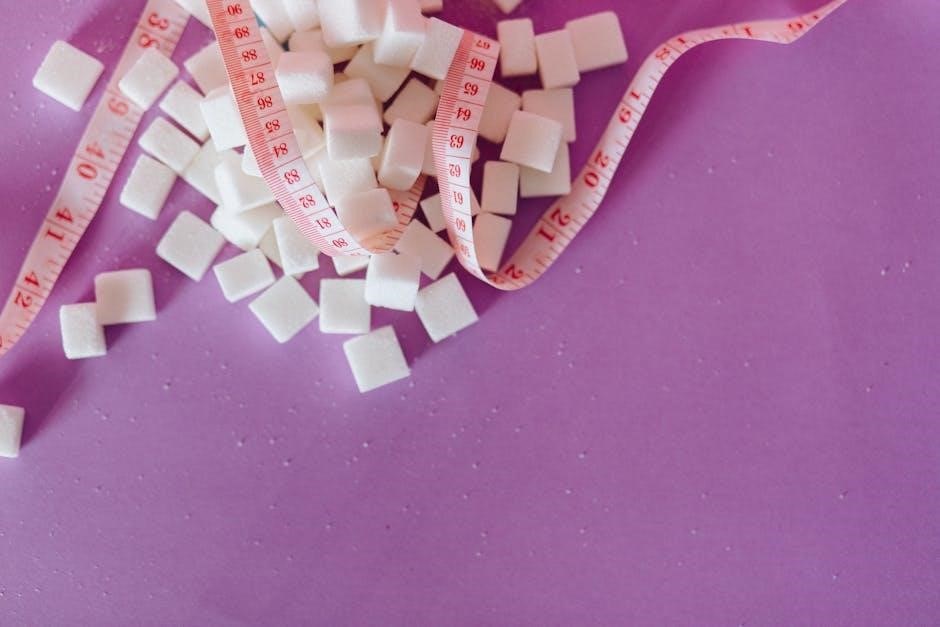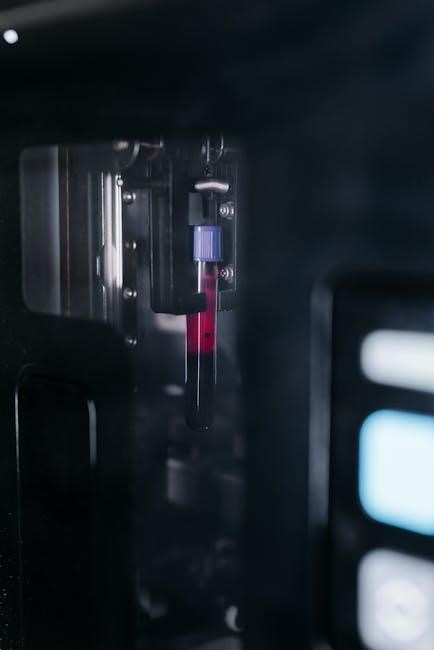color guide blood collection tubes
Color guide blood collection tubes are essential for clinical laboratory testing‚ using
specific
tubes with distinct colors‚ serving various purposes‚ ensuring accurate medical testing and diagnosis with different additives and inversions required.
Overview of Blood Collection Tubes
Color guide blood collection tubes are used to collect and store blood samples for laboratory testing‚ with each tube having a specific purpose and containing different additives to preserve the sample.
The tubes are color-coded to indicate the type of additive or anticoagulant present‚ making it easier to select the correct tube for a particular test.
A thorough understanding of the different types of blood collection tubes and their uses is essential for healthcare professionals to ensure accurate and reliable test results.
The color guide provides a quick reference for selecting the correct tube‚ and it is essential to follow the recommended procedures for collecting and handling blood samples to avoid contamination or errors.
Proper use of blood collection tubes is critical for obtaining accurate laboratory results‚ and the color guide is an essential tool for healthcare professionals.
The color guide includes information on the different types of tubes‚ their additives‚ and the tests for which they are used‚ making it a valuable resource for healthcare professionals.

Differences in Blood Collection Tubes
Different blood collection tubes have varying purposes‚ with distinct colors and additives‚ serving specific functions in laboratory testing and medical diagnosis procedures every day.
Red Blood Collection Tubes
Red blood collection tubes are used for collecting serum samples and are often referred to as plain tubes‚ containing no additives or clot activators‚ allowing blood to clot naturally.
The use of red tubes is essential for various laboratory tests‚ including serum separation and clot formation.
Red tubes are commonly used for tests such as blood typing‚ cross-matching‚ and serum chemistry tests‚ requiring a specific amount of blood to be collected.
The red tube is one of the most frequently used tubes in clinical laboratory settings‚ due to its simplicity and the wide range of tests that can be performed using the collected serum sample.
The tube’s additive-free design makes it an ideal choice for tests that require minimal interference from additives‚ providing accurate and reliable results.
Red blood collection tubes play a critical role in clinical laboratory testing‚ and their proper use is essential for obtaining accurate test results‚ which are used to diagnose and treat various medical conditions.
Proper handling and storage of red tubes are also crucial to ensure the quality of the collected sample‚ and to prevent any potential errors or contamination.
Overall‚ red blood collection tubes are a fundamental component of clinical laboratory testing‚ and their use is essential for providing high-quality patient care.

Tube Additives and Their Functions
Tube additives serve purposes‚ including clotting and anticoagulation‚ using
specific
chemicals to ensure accurate test results‚ with different functions and requirements.
Clot Activators and Anticoagulants
Clot activators and anticoagulants are crucial components in blood collection tubes‚ serving distinct purposes in clinical laboratory testing. Clot activators‚ such as silica or glass particles‚ accelerate the clotting process‚ allowing for the separation of serum from blood cells. On the other hand‚ anticoagulants‚ like EDTA or heparin‚ prevent blood clotting‚ enabling the analysis of plasma or whole blood. The choice of clot activator or anticoagulant depends on the specific test requirements‚ as different additives can affect the accuracy of test results. For instance‚ clot activators are commonly used in serum separation tubes‚ while anticoagulants are used in plasma or whole blood tubes. Understanding the functions of clot activators and anticoagulants is essential for selecting the appropriate blood collection tube‚ ensuring reliable and accurate test results. By using the correct additives‚ healthcare professionals can obtain high-quality blood samples‚ which is critical for diagnosing and monitoring various medical conditions.

Quick Reference Guide for Blood Collection Tubes
Color-coded tubes simplify blood collection‚ using
- specific
guides for accurate testing and diagnosis purposes always.
BD Vacutainer Tube Additives and Inversions
The BD Vacutainer tube system is widely used for blood collection‚ with various tubes containing different additives and requiring specific inversions to ensure proper mixing. The Marble or Gold tube‚ for example‚ contains a clot activator and gel for serum separation‚ requiring 5 tube inversions. This process is crucial for accurate test results‚ as it allows the clot activator to mix with the blood and facilitates serum separation. The number of inversions required may vary depending on the tube type and additive‚ so it is essential to follow the recommended guidelines. By understanding the different additives and inversions required for each tube‚ healthcare professionals can ensure accurate and reliable test results‚ which is critical for patient diagnosis and treatment. The BD Vacutainer tube system provides a convenient and efficient way to collect and process blood samples‚ with a range of tubes available for different testing purposes.

Commonly Associated Tests with Blood Collection Tubes
Tests like CBC and blood chemistry are commonly associated with specific
tube
types and colors‚ requiring proper tube selection.
Tube Top Color and Additive Combinations
The combination of tube top color and additives is crucial for accurate blood collection and testing. Different tube top colors indicate the presence of specific additives‚ such as clot activators or anticoagulants‚ which serve distinct purposes in clinical laboratory testing. For instance‚ a red tube top color typically indicates the presence of a clot activator‚ while a purple tube top color indicates the presence of EDTA‚ an anticoagulant. The specific additive and tube top color combination required for a particular test is determined by the type of analysis to be performed. A thorough understanding of tube top color and additive combinations is essential for healthcare professionals to ensure that blood samples are collected and processed correctly. This knowledge enables them to select the appropriate tube for each test‚ ultimately leading to accurate and reliable test results. Proper tube selection is critical for patient care and diagnosis.
